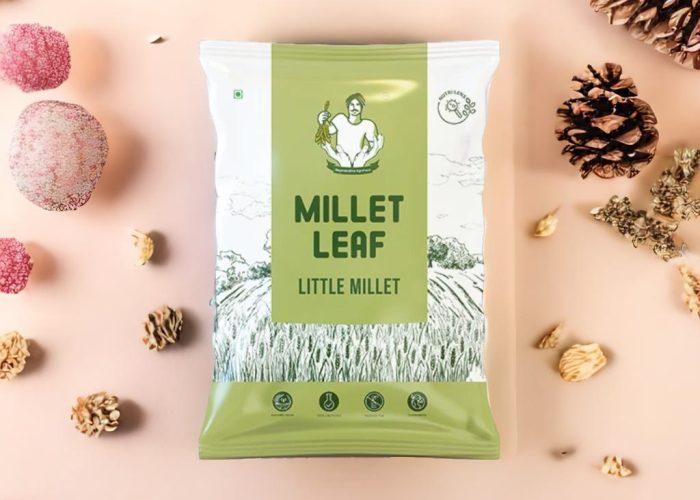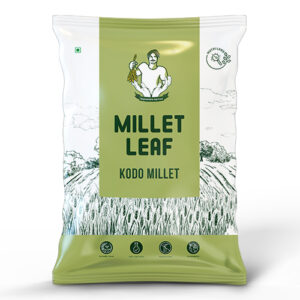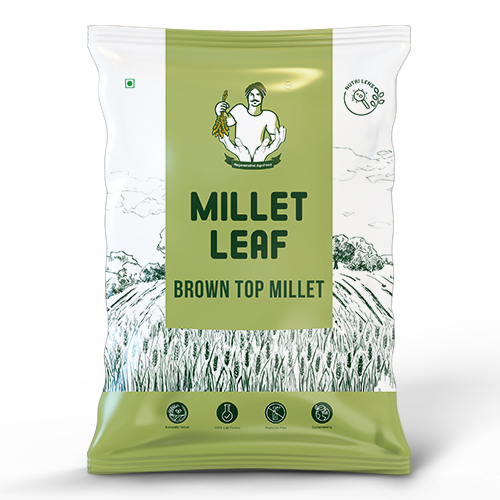The Hidden Dangers of Maida: 7 Reasons to Reevaluate Your Dietary Choices
“Good food choices are good investments in your health and longevity."
- Imagine starting your day with a plate of crispy samosas or ending it with a fluffy white bread sandwich.
- While these dishes might seem harmless, their primary ingredient—Maida (refined wheat flour)—could be silently harming your health.
- This blog sheds light on why it’s time to reconsider consuming maida and embrace healthier alternatives for a better lifestyle.
How Maida Is Processed: A Simple Flowchart
Maida is a highly refined flour derived from wheat. During processing, the bran (rich in fiber) and germ (loaded with nutrients) are removed, leaving behind the starchy endosperm. This refined flour is then bleached using chemicals to achieve a bright white appearance, making it visually appealing but nutritionally poor.
The end product lacks essential vitamins, minerals, and dietary fiber, offering only empty calories.

This simple flow chart illustrates how wheat transitions through various processes to become maida, losing much of its nutritional value in the journey.
Comparison: Whole Wheat Flour vs. Refined Wheat Flour (Maida)
This comparison highlights the stark differences between whole wheat flour and refined maida, reinforcing the need for healthier dietary choices.
| Aspect | Whole Wheat Flour | Refined Wheat Flour (Maida) |
|---|---|---|
| Processing | Minimal processing; retains bran and germ | Heavily processed; bran and germ removed |
| Nutritional Value | High in fiber, vitamins (B-complex), and minerals | Low nutritional value; mostly starch |
| Appearance | Brownish in color due to bran | Bright white due to bleaching agents |
| Glycemic Index (GI) | Lower GI; helps in maintaining blood sugar levels | Higher GI; causes blood sugar spikes |
| Health Impact | Promotes digestion, heart health, and sustained energy | Contributes to obesity, diabetes, and fatigue |
| Usage | Used for chapati, bread, and healthier baked goods | Used in cakes, pastries, and processed foods |
| Additives | Free from chemicals and preservatives | Contains additives and bleaching agents |
The Problems: What Makes Maida Harmful?
1.Nutritional deficiency
Maida has been stripped of its fiber, vitamins, and minerals during processing, leaving it with empty calories that provide no real nourishment.
Example: White bread, pastries, and noodles made from maida offer quick energy but lack essential nutrients.
2. High Glycemic Index (GI)
Maida has a high GI, causing rapid spikes and drops in blood sugar levels. This can lead to fatigue, mood swings, and long-term insulin resistance.
Example: Biscuits and cookies made with maida are common culprits.
3. Risk of Obesity
Foods made from maida are often calorie-dense with little to no fiber, resulting in increased hunger. This can lead to overeating and unwanted weight gain, particularly among children and teens.
Example: Regular consumption of pizza bases or burger buns made from maida can contribute to obesity.
4. Contributes to Digestive Issues
Without fiber, maida can disrupt normal digestion, causing constipation and other gastrointestinal issues.
Example: Fried snacks like samosas and pakoras are low in fiber and high in maida.
5. Loaded with Additives and Preservatives
Many maida-based processed snacks are packed with preservatives, artificial flavors, and trans fats, which can have long-term health effects.
Example: Instant noodles or ready-to-eat frozen parathas often include harmful additives.
6. Linked to Lifestyle Diseases
Overconsumption of maida is associated with an increased risk of diabetes, heart disease, and hypertension.
Example: Cakes and pastries, often consumed during celebrations, contribute to such risks when eaten frequently.
7.Higher Chances of Food Addiction
Foods high in refined flour often lead to cravings, making it easier to fall into a cycle of unhealthy eating habits.
Example: Packaged snacks like crackers or chips may harm immunity over time.
Find Solutions: How to Avoid Maida in Daily Foods
Practical Tips to Cut Back on Maida
01.
Switch to Whole Grains
Replace maida with healthier options like whole wheat flour, millet flour, or oats.
02.
Read Labels Carefully
Check ingredient lists when buying packaged foods to avoid hidden maida labeled “refined wheat flour” or “enriched flour.
03.
Cook at Home
Preparing meals at home gives you control over the ingredients.
04.
Choose Natural Alternatives
Use naturally gluten-free flours like almond flour, coconut flour, or quinoa flour for baking and cooking.
05.
Gradual changes
Make dietary changes gradually. Slowly introducing healthier alternatives can help ease the transition for you and your family.
Personal Stories: Real-Life Transitions
My Journy: From Maida to Millets
When my kid turned five, I noticed he/she was becoming more demanding about snacks. After realizing how many of those snacks contained maida, I decided to make a change. Involving him/her in the kitchen became a fun project.
Together, we baked millet pancakes, muffins using whole wheat and millet flour and applesauce instead of refined sugar. Not only did he/she love cooking, but he/she also started to appreciate healthier ingredients.
Similarly, I recall another parent who shared their struggle with lunchbox options. By packing whole grain sandwiches and fruit, they transformed their child’s eating habits and reduced reliance on junk food. It’s these little changes that make a significant impact over time.

Final Thoughts: Time to Reevaluate Your Choices
Switching from maida to whole-grain alternatives might seem challenging initially, but the health benefits are undeniable. By making small, consistent changes, you can transform your diet, reduce health risks, and enhance your well-being.

FAQs Related to the Blog Title
Whole wheat flour, millet flour, almond flour, and quinoa flour are excellent alternatives.
Yes, occasional consumption in moderation is fine, but regular intake should be avoided.
Read labels carefully and look for terms like “refined wheat flour” or “enriched flour.”
Not necessarily. Always check for additives and sugar content in gluten-free products.
Baking at home allows control over ingredients, but using healthier flour alternatives is recommended.
“Nature provides whole grains; it’s humans who refine the nutrition out of them”
At Millet Leaf, we’re proud to be 100% Maida-Free, using only wholesome, natural ingredients that are both delicious and nutritious.
Enjoy the goodness of unrefined, healthy choices for you and your family. Order now!
Transform Your Health: 10 Reasons to Switch to a Healthier Lifestyle with Millets Today
“Small grains, big benefits. Embrace millets for a healthier tomorrow.”
Real food doesn’t have ingredients. Real food is ingredients." – Jamie Oliver, Celebrity chef and restaurateur
In a world where fast food and processed meals dominate, many are seeking ways to improve their health and well-being.
This blog explores how incorporating millets into your diet can be the game-changer you’ve been looking for.
Join the I’m MILLETian revolution community and take the first step towards better health today.
10 Reasons to Switch to a Healthier Lifestyle with Millets Today

Millets are loaded with vitamins and minerals like magnesium, calcium, and iron. One cup of cooked millet offers about 18% of your daily requirement for magnesium. So, it's like giving your body a hug with every bite!

Millets are naturally gluten-free, making them an excellent choice for people with gluten intolerance or celiac disease. Their high fiber content also supports better digestion.

The high fiber content in millets keeps you feeling full for longer, curbing unnecessary cravings and aiding in weight management.

Millets have a low glycemic index, which means they release sugar slowly into your bloodstream. This helps keep energy levels steady—no more mid-afternoon crashes!

Rich in magnesium and potassium, millets support heart health by regulating blood pressure and lowering bad cholesterol levels.

Packed with antioxidants, zinc, and selenium, millets enhance your immune system, helping you fight off illnesses more effectively.

Millets are drought-resistant crops, which means they require less water and are good for the environment. By choosing millets, you contribute to sustainable agriculture—high five for Mother Earth!

Millets can be cooked in various ways—from porridge to salads and even as side dishes. Get creative! Think of millet stir-fry or even millet pancakes on a lazy Sunday morning. Why not switch it up?

Whether it’s a growing child, a busy adult, or a senior citizen, millets cater to diverse nutritional needs across all life stages.

By switching to millets, you are not just transforming your health; you’re joining a community of like-minded individuals advocating for healthier choices. Let's give a cheer for the millet movement!
Personal Stories: Incorporating Millets into Daily Life

Ramesh’s Journey to Diabetes Control
As someone diagnosed with Type 2 diabetes, Ramesh struggled to maintain his blood sugar levels. Switching to a millet-based breakfast of Millet porridge helped him stabilize his glucose levels within three months.

Lakshmi’s Family Transformation
Lakshmi, a mother of two, replaced her family’s evening snacks with Millet pancakes and millet cookies. The result? Her kids became more energetic, and the family’s snacking habits improved significantly.

Arya’s Weight Loss Success
Arya incorporated Millet salads into her lunch routine. Combined with regular exercise, she lost 5 kg in two months while feeling more active and focused.
Final Thoughts:
Switching to millets isn’t just about food; it’s about embracing a healthier lifestyle for yourself and the planet. These ancient grains bring immense benefits that go beyond nutrition. Start small, experiment with recipes, and gradually make millets a staple in your diet. Join the I’m MILLETian Revolution Community today and take control of your health, one meal at a time.
Frequently Asked Questions
Yes, millets are ideal for children as they provide essential nutrients for growth and development.
Begin with simple swaps, like millet-based porridge for breakfast or replacing rice with millets in your meals.
Yes, millets are cost-effective and widely available, making them a budget-friendly option.
Absolutely! Millets’ high fiber content helps control hunger and supports weight loss goals.
Start with foxtail or pearl millet as they’re versatile and easy to cook.
Millet Leaf Mission
Welcome to Millet Leaf!
Real food doesn’t have ingredients. Real food is ingredients." – Jamie Oliver, Celebrity chef and restaurateur
Unveiling the Truth: Discover the Hidden Harmful Ingredients in Your Food
Did you know that the average person unknowingly consumes dozens of harmful food additives daily? From artificial sweeteners to trans fats, these hidden culprits in our food supply can negatively impact our health.
This blog uncovers the truth about harmful ingredients lurking in everyday foods and empowers you to make informed choices for a healthier lifestyle.
Harmful Ingredients in Daily Foods
What Are Harmful Ingredients?
Many processed and junk foods contain substances that may harm your health over time. These include:
1. Artificial Sweeteners
Found in soft drinks, candies, and baked goods, HFCS (High Fructose Corn Syrup) is a sweetener that can lead to potential health risks such as metabolic issues, headaches, obesity, diabetes, and heart disease. Present in candies, soft drinks, and sauces, added sugars contribute to weight gain and insulin resistance.
2. Trans Fats
Commonly found in partially hydrogenated oils, trans fats are often used in fried and baked goods. These fats can raise bad cholesterol levels and lower good cholesterol, increasing the risk of heart disease.
3. Artificial Food Colorings
Many processed foods contain artificial dyes like Red 40 and Yellow 5. These can lead to hyperactivity in children and may have other health effects.
4. High Sodium Levels
Found in chips, frozen meals, and canned soups, excessive salt intake can lead to hypertension and other cardiovascular issues.
5. Preservatives like BHA and BHT
Used in packaged snacks to extend shelf life, these chemicals are suspected human carcinogens and organ-system toxins.
6. Maida
Maida has a high glycemic index, which means it can cause a rapid spike in blood sugar levels, obesity, risk of chronic illness, and digestive problems.
Find Solutions: How to Avoid These Ingredients in Our Daily Foods
Understanding which ingredients to watch out for is just the start. Here are some practical ways to avoid harmful ingredients:
Read Labels
Always read ingredient labels when shopping. Avoid products that list any of the harmful ingredients mentioned on the package.
Choosing Whole Foods
Fill your cart with whole foods like fresh fruits, fresh vegetables, unpolished whole grains, and lean proteins. These items are less likely to contain harmful additives.
Cook at Home
Preparing meals at home allows you to control what goes into your food. Experiment with fresh ingredients and wholesome recipes.
Choose Natural When Possible
Natural foods often do not contain artificial additives, chemicals, and pesticides, making them a safer choice for your health.
Educate Yourself
Stay informed about food ingredients and keep learning. Understanding what’s in your food can empower you to make better choices.
Personal Stories: Incorporating Healthier Choices into Daily Life
When I decided to focus on my health, I started by inspecting my kitchen and refrigerator. I was shocked at just how many processed foods contained harmful ingredients. By swapping out sugary snacks for fruits and choosing homemade meals over takeouts, I quickly noticed an improvement in my energy levels.
Jane’s Story: A Journey to Healthier Eating
Jane, a busy mom, realized her family consumed too many processed snacks. She began meal prepping on weekends, incorporating fresh ingredients and limiting sugary treats. Her efforts paid off: her kids are now more energetic, and her family’s overall health improved.
Raj’s Transformation: Decoding Labels
Raj, a working professional, started reading food labels during grocery shopping. By avoiding products with high sodium and artificial preservatives, he reduced his blood pressure significantly within six months.
Final Thoughts: Taking Control of Your Diet
Switching to a healthier lifestyle doesn’t happen overnight, but small, consistent changes can lead to big rewards. By understanding what’s in your food and making informed decisions, you can take charge of your health and well-being. Remember, it’s not about perfection but progress.
“Every time you eat is an opportunity to nourish your body”

Frequently Asked Questions.
Avoid trans fats, artificial sweeteners, high-fructose corn syrup, and preservatives like BHA and BHT.
Processed foods often have long ingredient lists with unrecognizable names and additives.
Yes, occasional indulgence in minimally processed foods may be fine. The key is to maintain a balanced diet most of the time.
Not all preservatives are harmful. Natural preservatives like vinegar and salt are generally safe.
Focus on buying seasonal produce, cooking at home, and reducing waste by planning meals in advance.
Signs include fatigue, digestive issues, skin reactions, and sudden weight gain.
Start by going through your kitchen, checking labels, and removing items with harmful ingredients. Slowly replace them with healthier options.
Eating healthy doesn’t have to be expensive. Planning meals and buying seasonal produce can help manage costs.
Five Quick Tips for Healthier Eating
- Start your day with a nutrient-dense breakfast
- Drink water instead of sugary beverages.
- Carry healthy snacks for on-the-go hunger
- Cook meals at home to control ingredients.
- Gradually reduce processed foods
- Involve your family in meal prep for a fun and educational experience.
References
- World Health Organization (WHO) – Harmful Food Additives
- National Institutes of Health (NIH) – Effects of Artificial Sweeteners
- “The Hidden Dangers of Processed Foods” – Healthline
- “The Impact of Artificial Food Dyes” – American Journal of Clinical Nutrition
Being aware of what goes into your food can empower you to make healthier choices.
Start today, and you’ll be amazed at the positive changes in your life!
